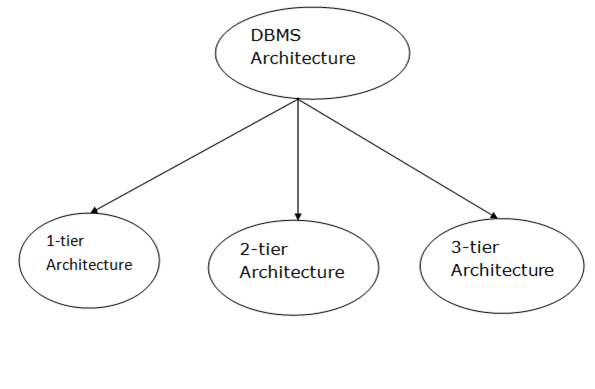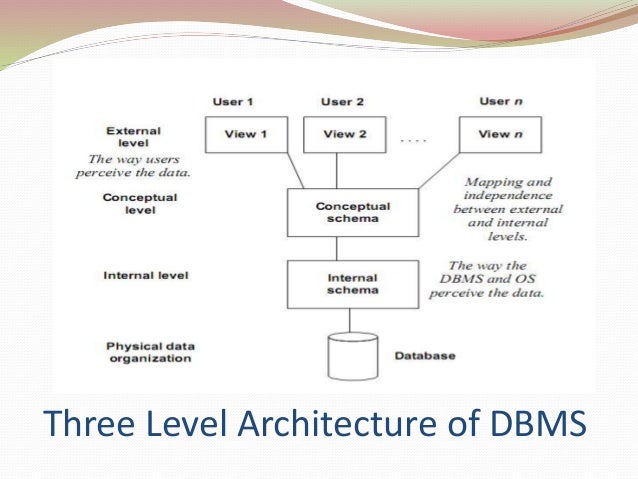DBMS Architecture
DBMS Architecture is a very fundamental part of managing databases in an orderly fashion and saves a lot of time and energy. A Database Management System (DBMS) Architecture is a blueprint that sets up the structure of a DBMS, which is the one responsible for collecting, retrieving, and controlling data in a structured manner. More so, it is the system architecture of DBMS that needs more attention to the security and efficiency of data communication between applications and users. This overall plan embraces many layers and parts that together carry out the functions of data integrity, security, efficient query processing of users.
DBMS Architecture is a term used to describe the way data is stored, processed, and accessed. It additionally depicts between users, the DBMS, and the other external systems. Learn how the DBMS Architecture works and what types of DBMS architecture there are is crucial for administrators and developers as they can help the system run faster, be more scalable, and maintain data consistency throughout the entire system. Architecture of database management system is more than a name for a theoretical schema; it is a quite pragmatic hardware model that gives definition to and heuristically organizes data in various applications and environments.
As has been set out insightfully in this article, we would like to dive deeper into the layers and components that make up the DBMS architecture, exploring how it functions and examples of its real-life applications. DBMS architecture comprises various types, advantages, limitations, and application opportunities of various software. One of the required features of the system architecture is the tier position of different levels, namely, single-tier, two-tier, and three-tier architecture, as well as their respective advantages, disadvantages, and the specific use cases where each type is most effective.
Grasping the details of DBMS architecture is a must-have skill for you to make more informed decisions when designing or choosing a database system. In addition, a well-organized DBMS architecture provides way to make sure that your system can handle large volumes of data, maintain high levels of performance, and guarantee security and consistency.
Types of DBMS Architectures
There are typically three types of DBMS architectures, which are Single-tier architecture, Two-tier architecture, and Three-tier architecture. These architectures show how the DBMS parts are connected and the way users and applications access the data. The above-mentioned architectures are the steps of file processing used to organize the database to be efficient.

1. Single-Tier Architecture
- Single-tier architecture is the simplest and most straightforward type of DBMS architecture.
- In this architecture, both the database and the DBMS reside on the same machine or server.
- That is why it is very easy to operate a tinniest system or s/w with no need for a great amount of data or remote access.
- In single-tier architecture, the client application talks to the database directly without any intervening layers.
- The client does operations such as inserting, retrieving, updating, and deleting data straight from the database.
- This type of architecture is used more frequently in the context of personal or standalone database operations like desktops.
Example:
Unlike single-tier architecture, wherein a desktop database application such as Microsoft Access is a usage example. The DBMS, the database, and the frontend are all on the same computer. The user communicates through the graphical interface with the server. The database is run locally and does not need any network connectivity.
Advantages of Single-Tier Architecture:
- Simplicity: To set up and maintain this system is easier, since all components are on a single machine.
- Being more cost-effective for smaller, independent projects.
Disadvantages of Single-Tier Architecture:
- Scalability: The architecture is suitable mainly for small-scale or single-user applications.
- Lack of data security: Since everything is on a single machine, it may cause the system to be vulnerable to security issues if the machine fails or is accessed by unauthorized individuals.
2. Two-Tier Architecture
- Two-tier architecture is the advanced version of DBMS architecture.
- The database management system is divided into two layers in this particular scenario: the client layer (front-end) and the database server layer (back-end).
- The client in this case is in direct connection with the database server.
- The client sends requests (queries) to the server that processes them and sends back the results.
- The model of two-tier is usually that the client works with the user interface and application logic, while at the same time the database server is in charge of the data storage and retrieval.
- This design has often been used in cases where a adequate number of users need to access a database.
Example:
The perception of an online shopping system is that the client is the only entity that interacts with the shopping interface on his web browser, and the browser is the one that sends requests to the database server to request product information, customer details, and orders. The server processes the server query and sends the customer’s required data back to the client for display on the screen.
Components of Two-Tier Architecture:
- Client (Front-End): It is the client’s responsibility to interact with the user and send queries to the database. It mostly consists of an application that gives the user a chance to type in data and control the DBMS.
- Database Server (Back-End): The back end is a part of a system that consists of data storage and management as well as the data recovery. It takes the queries from the client and returns the results that are relevant.
Advantages of Two-Tier Architecture:
- The client can employ the server to interact with the database server, thereby having a faster form of communication.
- Their respective functions and responsibilities stand fast as every server does elsewhere/tasks for them and hospital does not deal with transportation.
Disadvantages of Two-Tier Architecture:
- Scalability: This means that there is a limit to the number of users it can handle. For instance, the databases of two-tier systems usually get jammed during regular operations when a large number of people try to log in. The situation usually worsens so that you have to wait more to get the needed response still.
- Lack of centralized management: When you are the network administrator, you find it cumbersome for security, access control, and data integrity to be stretched over multiple sites.
3. Three-Tier Architecture
- The three-tier architecture is typically considered and is applied in a contemporary DBMS architecture as the best model.
- The application is divided into a presentation layer, an application layer, and a data layer in either in a two or three-tiered structure.
- The choice of architecture should be the one which provides the maximum scalability, flexibility, and security as compared to the one and two-layer implementations.
- The client (presentation layer) communicates with an intermediary application server (application layer) which then manipulates the database server (data layer) in the three-tier architecture.
- It is particularly suitable in large-scale systems, web applications, and systems that need to support a large number of users.
Example:
A web-based banking application is a practical case of three-tier architecture. The client (presentation layer) is the one who communicates with the user and the user’s requests are submitted to the server (application layer), which then carries out the transaction. The server even reaches out to the database server (data layer) for the purpose of fetching or updating the data.
Components of Three-Tier Architecture:
- Presentation Layer (Client Layer): This is the part of the web application that is in charge of the conversation with the user.
- Application Layer (Business Logic Layer): This layer focuses on the business logic (the logical part) of the applications. It receives requests from the presentation layer and translates them into SQL or database operations. It is in a majority of cases a web server or middleware that functions as a connection between the client and the server.
- Data Layer (Database Layer): The data layer is where the DBMS and the database are. It stores the actual data and it is also responsible for the query execution that comes from the application layer.
The advantages of the Three-Tier Architecture include the following:
- Scalability: The system provides a distribution of interaction by passing the workload across three independent layers hence, the system can serve a large number of users at any time making the system highly scalable.
- Flexibility: Designers and developers have the ability to combine various software and hardware that leaves them independent and capable of being manipulated separately if the need arises without disrupting the other layers.
- Security: The application layer can operate as a communication bridge for safe user access and thus shield the database layer from unwanted cloud clients.
Disadvantages of 3-Tier Architecture:
- Complexity: Implementing a Three-tier architecture requires more time and skills than just one layer. This entails more work and skills than using only one layer since you will have to manage all the layers, which will make the whole work cumbersome.
- Latency: Inter-component communication could be the bottleneck when the recording is made and the installation of these systems is carried out on the database server where there is a high level of traffic, disks, and processors.

